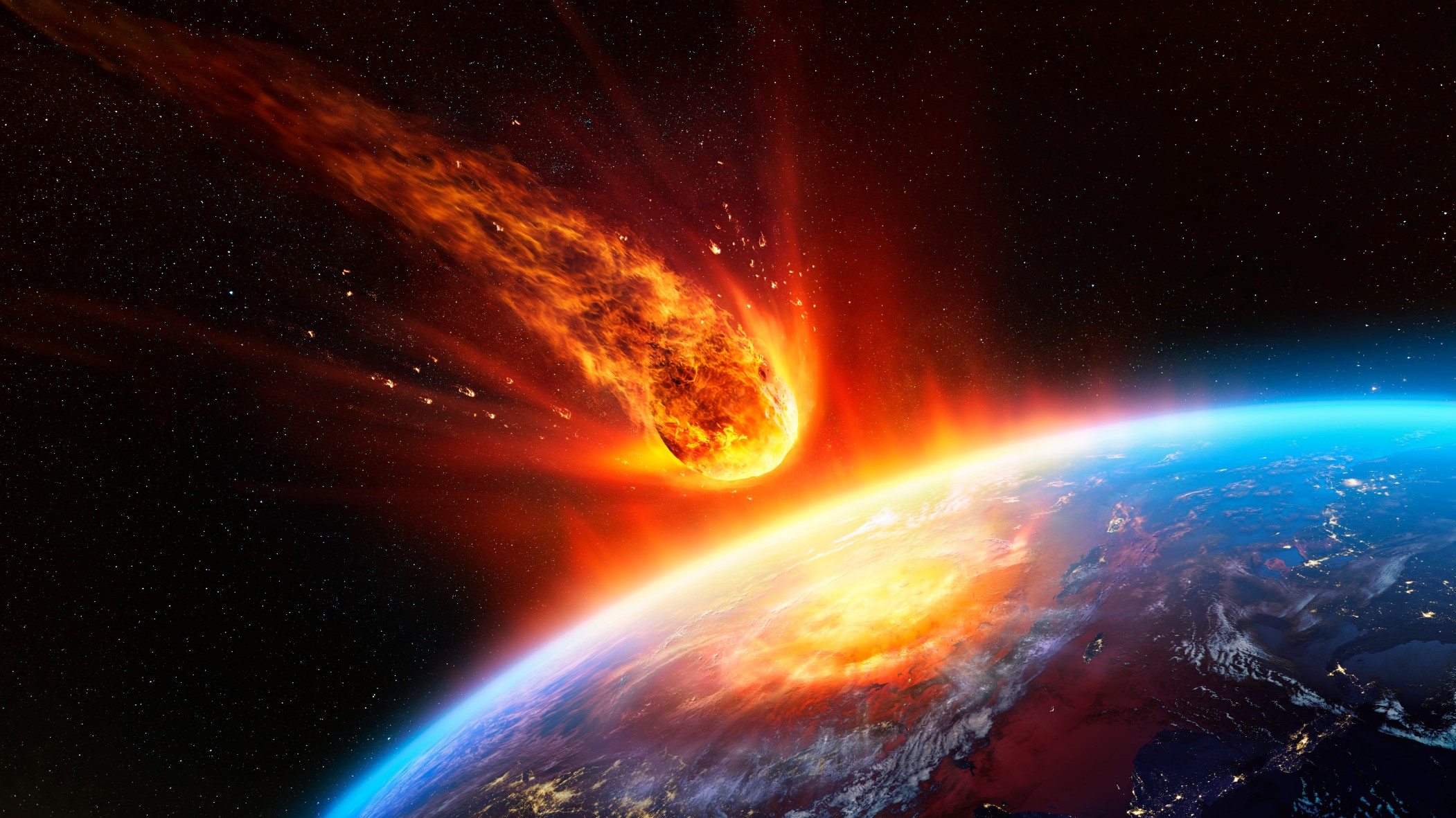A
A
A
University of Michigan researchers have been able to map what happened when a miles-wide asteroid collided with Earth about 66 million years ago and wiped out dinosaurs and other species. According to information published at
sciencedaily.com, the catastrophic crash, resulting tsunami and intense cloud cover worldwide wiped out the dinosaurs and 75% of the the plants on the planet. The consequences made major changes to the planet’s composition and weather while leaving behind a 62-mile-wide crater.
The results of that seminal event in world history included destruction on a massive, unparalleled scale that included miles-high waves that affected the composition of the ocean floor for miles away, which researchers were able to track using advanced imaging and analysis technologies. The crater remains on the Yucatán Peninsula, but the tsunami disturbed ocean sediments halfway around the world to provide a distinctive footprint.
Findings of the University of Michigan Study
Read More »
Scientists tested the soil at various locations along the tsunami’s path of destruction. The lead author, Molly Range, had support from other studies and her co-authors, paleoceanographers Brian Arbic and Ted Moore. The earlier studies concluded that the dinosaur-killing asteroid was 8.7 miles long, and it created a massive tidal wave never seen before that rose 2.8 miles high before subsiding.
The researchers were able to map the resulting tsunami by studying sedimentary rock layers and records of older sediments. Tsunamis are massive ocean waves that are triggered by cataclysmic events like earthquakes, underwater landslides, volcanic eruptions and meteors striking the earth. Most meteors burn up in the earth’s atmosphere and are called falling stars by stargazers.
However, the massive asteroid that caused the dinosaur extinction event probably triggered all the above-mentioned disasters simultaneously. The tsunami was about 30,000 times larger than the devastating tsunami that struck Indonesia in 2004 and killed 230,000 people. The Tsunami that struck Japan in 2011 and the famous Krakatoa volcanic eruption of 1883 barely registered on the scale when compared with the dinosaur extinction event.
The crater that survives as evidence was named Chicxulub, and the meteor-impact crater is almost 100% proven to have disrupted life on earth 66 million years ago. The crater was named for the nearby Chicxulub Pueblo, and geophysicists Antonio Camargo and Glen Penfield discovered the crater while searching the Yucatán Peninsula for signs of petroleum deposits.
Major Findings of the University of Michigan Chicxulub Study
Boundary sections were primarily used to map the tsunami. Boundary sections define the upper and lower stages of geologic time to determine when a particular type of strata developed. The research team used simulations to determine how far the tsunami moved while disturbing the expected layers of stratification.
In simple terms, the research found that the tsunami radiated east and northeast into the Atlantic Ocean and southwest across the Central American Seaway, the body of water that once separated the North and South American continents. The progress of the tsunami progressed into the Pacific Ocean. The simulations predicted certain patterns, and when these were confirmed as fact, they helped to prove the accuracy of the simulations.
Other findings of the University of Michigan research team include:
- Underwater Current Speed
The speed of underwater currents rose to 0.4 miles-per-hour, brisk enough to erode structures and disturb the sediment of the ocean floor.
- Shielded Areas
The researchers concluded that the southern part of the Atlantic Ocean, the northern part of the Pacific and all of the Indian Ocean — basically the area where the current Mediterranean Sea is now — remained relatively undisturbed by the tsunami.
- Corroboration of Modeling Predictions
The team was able to confirm the path of the tsunami based on the predicted areas of maximum impact, which were confirmed geologically.
- Heavily Disturbed Areas of New Zealand
The eastern shores of New Zealand provided significant indicators, which are called olistostrome deposits, that significant tectonic activity and boundary disturbances confirmed that the tsunami reached as far as New Zealand.
- Olistostrome Deposits
These olistostrome deposits confirmed the vast range of the tsunami and the speed of the asteroid when it hit Earth. The speed was estimated at 12 kilometers-per-second, which becomes 27,000 miles-per-hour. The evidence of sediment also indicated that the Chicxulub site was geologically composed of a granite crust covered by thick sediment — soil — and shallow amounts of ocean water.
- Wave Height
The initial impact created a massive wall of water two-and-a-half minutes after the asteroid struck, which rose to a height of 4.5 kilometers or 2.8 miles before ejecta fell back to Earth. After 10 minutes, a 1.5 kilometer wave swept across the ocean in a ring-shaped pattern moving in all directions outward from the Chicxulub impact site.
- Four Hours After Impact
After four hours, the waves passed through Central American Seaway and began to approach Pacific ocean targets.
- 24 Hours After Impact
After 24 hours, the waves had crossed the Pacific ocean and most of the Atlantic, and that’s where they entered the Indian Ocean from both coasts.
- 48 Hours After Impact
After 48 hours, tsunami waves had reached most coastlines and devastated coastal life. The waves produced signature weather events and intense flooding, but the researchers didn’t estimate the flood damage.
However, modeling predicted that wave heights in the Gulf of Mexico could certainly have surpassed the recent records set by Hurricane Ian for storm surges and flooding. Wave heights could have easily reached 100 meters or 328 feet.
- Aftermath of the Asteroid Strike
Waves could have grown even higher as they reached shorelines and shallow-bottom waters. The speeds would have settled to the tsunami’s speed of travel — 20 centimeters per second. Depending on the geometry of each particular coastline, most coastal regions would have been completely devastated.
Other consequences of the dinosaur extinction event include increased earthquake and volcanic activity, which would have thrown tons of debris into the air and blocked the sun. Like nuclear winter, an asteroid winter would likely upset the world’s ecosystems after destroying many species and most of the Earth’s amazing range of plant life during the Cretaceous geological period.
The distribution of tsunami sediment was consistent with typical Cretaceous marine life fossils, which added further confirmation of the results.
Follow-up Study Planned
The University of Michigan plans a follow-up study to consider the worldwide effects of the asteroid strike. That authorized study will be led by Vasily Titov of the National Oceanic and Atmospheric Administration from its Pacific Marine Environmental Lab. The co-authors wi-ll .i-include those involved with the initial project.
Worldwide flooding, the forthcoming ice age and other topics of interest will be investigated with the same scientific rigor, and funding sources include the National Science Foundation and the University of Michigan Associate Professor Support Fund.






